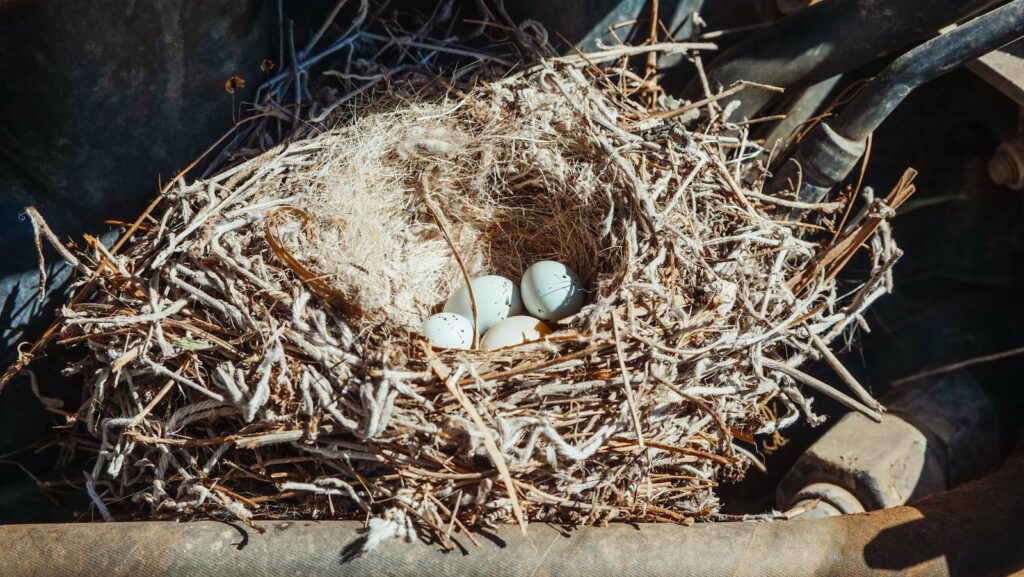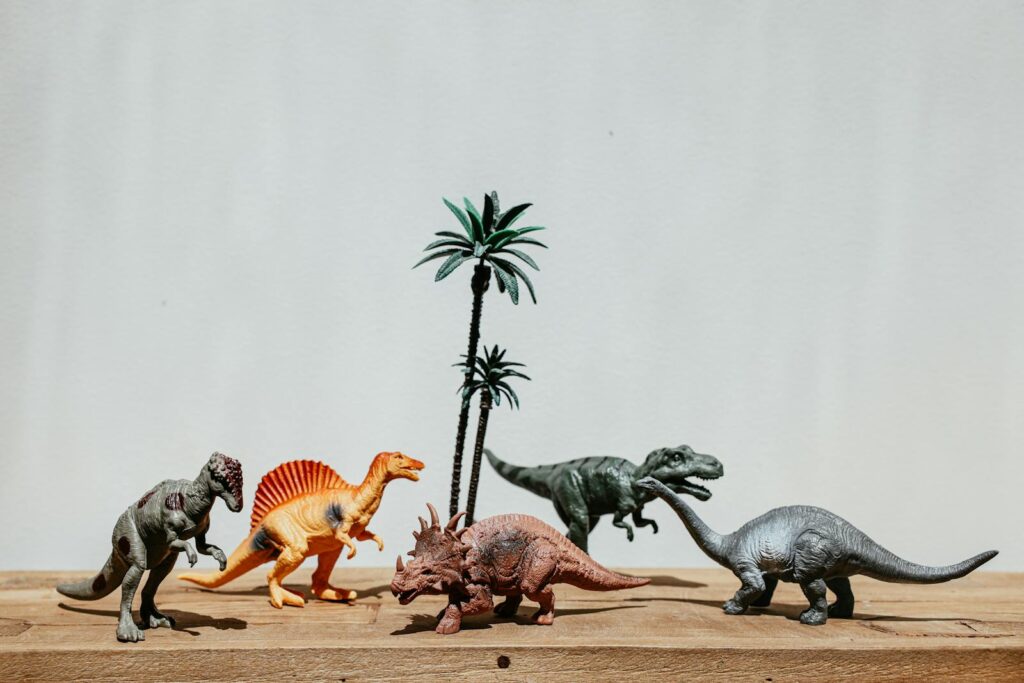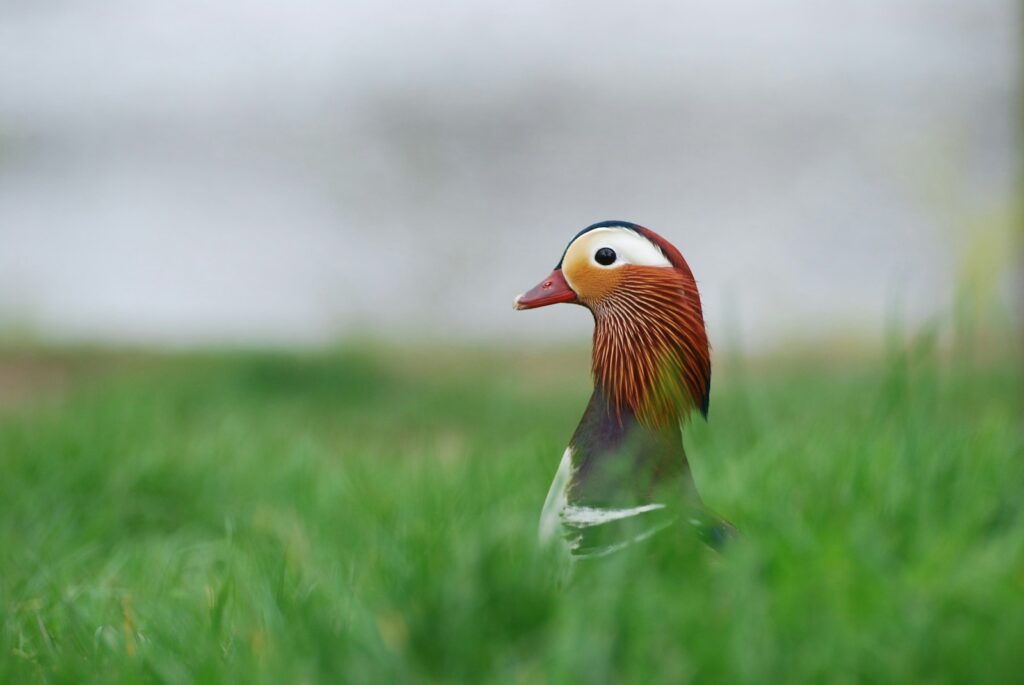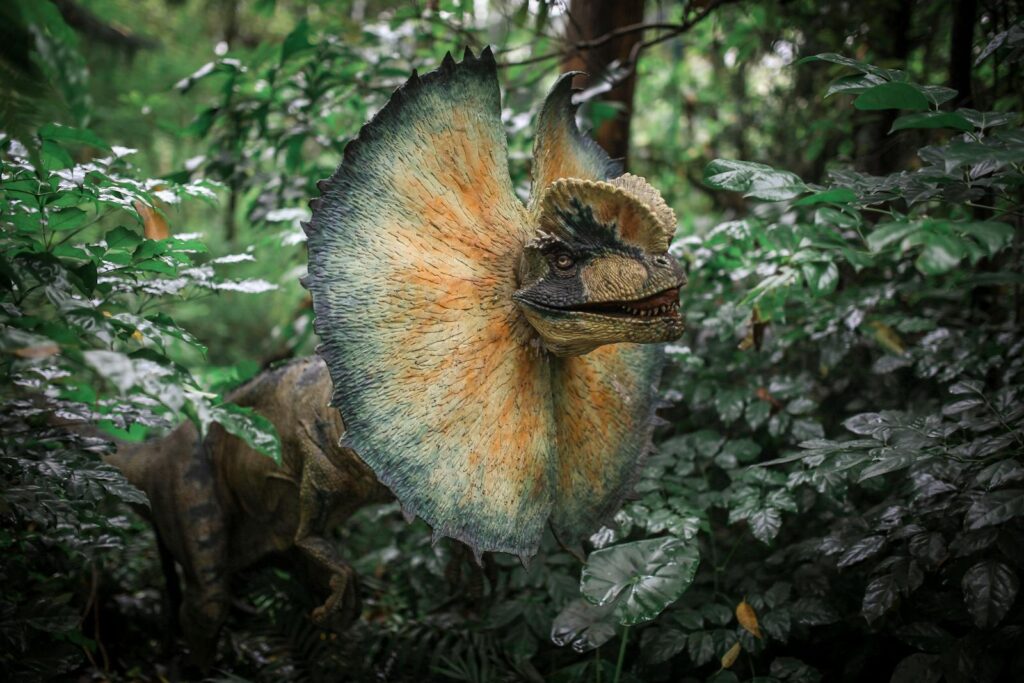The ancient struggle between life and predation played out dramatically in the nesting behaviors of dinosaurs. For over 150 million years, these magnificent creatures developed sophisticated strategies to ensure their offspring survived the vulnerable egg stage. Archaeological discoveries have provided fascinating glimpses into how dinosaur parents protected their future generations from hungry predators.
From elaborate nest construction to vigilant parental care, dinosaurs employed numerous defensive techniques that mirror behaviors we see in modern birds and reptiles today. Understanding these protective mechanisms not only illuminates dinosaur biology but also helps trace the evolutionary lineage of reproductive strategies that continue in their avian descendants.
The Vulnerability of Dinosaur Eggs

Dinosaur eggs represented perhaps the most vulnerable stage in these creatures’ life cycles. Unlike adult dinosaurs, which could fight or flee from threats, eggs were stationary targets rich in nutrients that attracted numerous predators. Paleontological evidence shows that dinosaur eggs varied widely in size—from as small as a chicken egg to larger than a football—but all faced similar dangers.
Their calcium carbonate shells, while providing some structural protection, could be easily crushed by larger predators or damaged by environmental factors. The extended incubation periods, sometimes lasting several months, further increased the eggs’ exposure to predation risk. For many dinosaur species, successful reproduction depended entirely on their ability to protect these vulnerable eggs until hatching.
Strategic Nest Placement

One of the primary ways dinosaurs protected their eggs was through careful selection of nesting sites. Fossil evidence suggests that many dinosaur species chose locations that balanced accessibility with protection from both predators and environmental hazards. Some theropods and sauropods preferred elevated areas that reduced flooding risks while providing better visibility of approaching threats.
Other species, particularly hadrosaurs, created nests in dense vegetation where eggs would be concealed from predators hunting by sight. Paleontologists studying nesting sites in Mongolia’s Gobi Desert discovered that some dinosaurs nested on gentle slopes, allowing adults to approach from downhill where they could maintain better visibility of potential dangers. This strategic placement demonstrates a sophisticated understanding of their environment and the threats within it.
Communal Nesting Behaviors

Many dinosaur species adopted communal nesting strategies that significantly enhanced egg protection through safety in numbers. Fossil sites in Argentina, Montana, and Mongolia have revealed massive nesting colonies where hundreds of dinosaurs laid eggs in close proximity. These dinosaur “rookeries” functioned similarly to those of modern seabirds, with the dense concentration of adults providing collective vigilance against predators.
In such arrangements, even when individual parents needed to leave temporarily for feeding, other adults remained present as deterrents to egg thieves. Maiasaura nesting sites in Montana show evidence of nests spaced just far enough apart for adults to move between them but close enough to maintain the security benefits of the group. This social protection strategy proved highly effective, as predators would face multiple defensive adults rather than isolated nesting individuals.
Nest Construction Techniques

Dinosaurs employed sophisticated nest-building techniques that offered physical protection for their eggs. Unlike the simple depressions created by some modern reptiles, many dinosaur nests show evidence of careful construction. Oviraptor nests featured eggs arranged in spiral patterns with the parents sitting directly atop them in a bird-like brooding position. Troodontids created nests with raised rims that prevented eggs from rolling away while also providing a modest barrier against small predators.
Perhaps most impressive were the nests of some sauropods, which laid eggs in shallow pits before covering them with vegetation that generated heat through decomposition while concealing the eggs from view. Maiasaura constructed nests up to three feet wide and eight inches deep using available vegetation, creating microenvironments that maintained optimal incubation temperatures while providing some protection from smaller predators.
Parental Guarding Behaviors

Many dinosaur species engaged in active nest guarding, with at least one parent remaining with the eggs throughout the incubation period. This parental vigilance represents one of the most effective predator deterrence strategies. The classic example comes from an Oviraptor fossil discovered in the 1920s, initially misinterpreted as a predator caught in the act of stealing Protoceratops eggs. Later research revealed this was actually a parent Oviraptor who died protecting its own nest, possibly during a sandstorm.
More recently, paleontologists have found evidence of troodontid dinosaurs that took turns incubating their nests, similar to modern birds. The physical presence of an adult dinosaur—often armed with claws, teeth, or defensive structures like horns and tail clubs—would have deterred all but the most determined predators, significantly increasing hatching success rates.
Egg Camouflage and Coloration

Recent scientific breakthroughs have revealed that some dinosaur eggs possessed coloration and patterning that helped camouflage them from predators. Studies of fossilized dinosaur eggshells using advanced spectroscopic techniques have detected traces of the same pigments that color modern bird eggs. Oviraptorid dinosaur eggs from China showed evidence of blue-green coloration, similar to many ground-nesting birds today whose eggs blend with surrounding vegetation.
Other fossil eggs exhibit speckled patterns that would have broken up their outline when viewed from a distance. This pigmentation likely evolved specifically as an anti-predator adaptation, helping to conceal eggs when parents needed to leave the nest temporarily. The discovery of egg coloration provides compelling evidence that dinosaurs faced significant predation pressure and developed sophisticated countermeasures in response.
Egg Burial Techniques

Many dinosaur species, particularly larger sauropods, protected their eggs by burying them completely. This strategy effectively concealed eggs from visual predators and provided temperature regulation through the insulating effects of soil and vegetation. The enormous titanosaurs of South America laid their eggs in large, shallow depressions before covering them with dirt and plant matter. Unlike species that provided ongoing parental care, these dinosaurs likely relied on the natural incubation provided by buried nests, similar to modern sea turtles or crocodiles.
The buried eggs gained protection not only from predators but also from environmental extremes, as the surrounding soil maintained more stable temperatures and humidity levels. Paleontologists have found evidence of such nesting strategies across multiple continents, suggesting this was a widespread and successful approach among certain dinosaur lineages.
Nest Architecture as Defense

Some dinosaurs constructed nests with specifically defensive architectural features. The nests of certain hadrosaurs show evidence of raised outer rims that may have created a physical barrier against small predators or prevented eggs from being washed away during rainstorms. In Mongolia, protoceratopsid nests featured a distinctive circular arrangement with eggs positioned vertically with their narrow ends pointing downward. This configuration maximized the number of eggs that could fit in the protected center of the nest while minimizing the nest’s overall footprint.
Troodon nests discovered in Montana revealed that eggs were partially buried in sediment but arranged with their pointed ends upward in pairs, forming a pattern that may have helped adults distribute heat evenly during incubation while keeping the eggs secure. These architectural adaptations demonstrate the sophisticated ways dinosaurs modified their environment to protect their offspring.
Decoy and Distraction Strategies

Fossil evidence suggests some dinosaur species may have employed distraction or decoy techniques to protect their real nests from predators. Similar to strategies used by modern plovers and killdeer, certain small theropods likely performed distraction displays to lead potential predators away from their nests. Paleontologists speculate that some dinosaurs may have created false scrapes or pseudo-nests near their real nests, potentially confusing predators that hunted by scent or visual cues.
Trackway fossils occasionally show evidence of dinosaurs making unusual movements near nesting sites that could represent distraction behaviors. While direct evidence for such behaviors remains limited due to their transient nature, the presence of similar strategies in modern birds—the direct descendants of theropod dinosaurs—strongly suggests these behaviors may have originated in their dinosaur ancestors as effective nest protection mechanisms.
Egg Clustering and Arrangement

The specific arrangement of eggs within nests served as another layer of protection against predators. Many theropod dinosaurs positioned their eggs in circular or spiral patterns that allowed parents to sit directly atop them without causing damage. This arrangement kept all eggs within the protective reach of the brooding adult while maximizing the number that could fit within a single nest. Troodontid nests often featured pairs of eggs leaning against each other, creating stable structures that wouldn’t roll or shift when the parent moved.
Some hadrosaur nests contained eggs arranged in multiple layers, with the uppermost eggs potentially serving as a sacrificial layer that might satisfy smaller predators without endangering the entire clutch. The neat, organized arrangements found in many fossil nests stand in stark contrast to the scattered pattern that would result from random laying, suggesting purposeful placement for optimal protection.
Physical Adaptations of Eggs

The eggs themselves evolved physical characteristics that provided protection against predators. Dinosaur eggshells varied significantly in thickness and porosity, with many developed specifically to resist crushing or puncturing by would-be predators. Sauropod eggs featured thick, mineralized shells with distinctive surface textures that may have added structural strength. Some theropod eggs possessed microscopic structural arrangements within the shell that provided maximum strength with minimal material.
Certain hadrosaur eggs showed evidence of textured outer surfaces that potentially improved camouflage by gathering soil or vegetation particles. Remarkably, some dinosaur eggs even contained microscopic pores arranged in patterns that allowed gas exchange while minimizing vulnerability to bacterial infiltration or small parasitic predators. These specialized adaptations demonstrate how dinosaur reproduction evolved specific countermeasures to the predatory pressures of the Mesozoic ecosystem.
Incubation Behavior Innovations

Advanced incubation behaviors provided significant protection for dinosaur eggs. Unlike most reptiles that rely on environmental heat, many dinosaurs actively regulated their eggs’ temperature through direct body contact. Oviraptorids and other small theropods sat directly on their nests with their feathered bodies providing both warmth and concealment from predators. Some larger dinosaurs appear to have used their body heat to warm eggs partially buried in loose soil or vegetation.
These active incubation strategies not only optimized development conditions but also ensured consistent adult presence that deterred opportunistic egg predators. Additionally, some species may have modified traditional incubation when threats appeared—fossil evidence occasionally shows eggs that were hastily rearranged, possibly in response to predator disturbance. These sophisticated incubation behaviors represent a critical evolutionary link between reptilian and avian reproductive strategies.
Evolutionary Arms Race

The protection of dinosaur eggs represented an evolutionary arms race between nesting dinosaurs and egg predators spanning millions of years. As predators developed more sophisticated methods of locating and accessing eggs, dinosaurs evolved increasingly complex protective countermeasures. Small, agile egg thieves like the Oviraptor and its relatives targeted unattended nests, while larger predators might have challenged even brooding parents for access to nutritious eggs.
Evidence of this ongoing struggle can be seen in the diversity of nesting strategies that evolved across different dinosaur lineages. Some opted for concealment and camouflage, others for strength in numbers, and still others for active, aggressive defense. This dynamic relationship between predator and prey ultimately shaped dinosaur reproductive behavior and contributed to the evolution of the highly successful nesting strategies we observe in modern birds, the last living dinosaurs.
Conclusion

The sophisticated methods dinosaurs used to protect their eggs reveal remarkable parallels with modern birds, their direct descendants. From strategic nest placement and communal protection to physical egg adaptations and attentive parental care, dinosaurs developed complex solutions to the universal challenge of protecting their offspring during their most vulnerable stage.
These evolutionary innovations proved so successful that many continue in modified forms among birds today. The fossil record provides a fascinating window into this aspect of dinosaur biology, showing that despite their fearsome reputation, many dinosaurs were devoted parents who invested significant energy in ensuring their eggs survived to hatching.
Their diverse protective strategies not only ensured the continuation of their species through the Mesozoic Era but also established reproductive patterns that would ultimately survive the extinction event that claimed all non-avian dinosaurs 66 million years ago.




